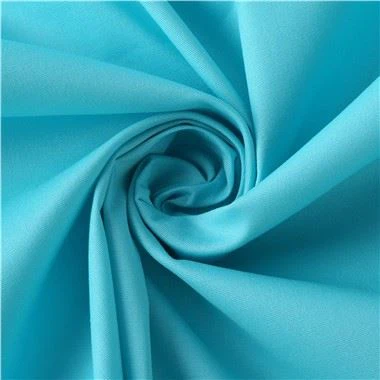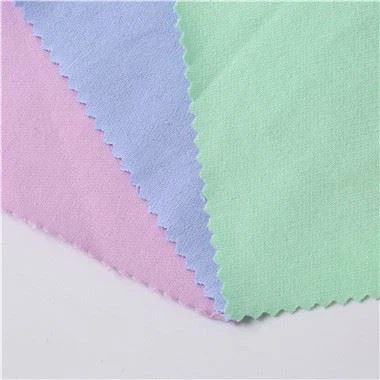What Is Spunbond Nonwoven Fabric?
Apr 01, 2025
Spunbond nonwoven fabric is a type of nonwoven material formed directly through a melt-spinning process, bypassing traditional textile steps such as spinning and weaving. Instead, it converts polymer raw materials into functional fabric in a single step. The production begins with the melting of thermoplastic pellets like polypropylene or polyester. At high temperatures, these materials are transformed into a viscous flow state and then extruded through precision spinnerets to form continuous filaments. These nascent fibers are stretched to micron-level diameters by high-speed airflow and rapidly cooled to solidify. They then randomly settle to form a web, which is consolidated into a stable fabric structure through thermal calendaring (heat pressing with rollers) or chemical binder penetration, resulting in a final product that combines flexibility and strength.
The core characteristics of this material stem from its unique structure. The network of continuous filaments provides excellent tensile strength and abrasion resistance, while the micron-scale pores between fibers balance breathability and barrier functionality. Additionally, spunbond nonwoven fabric exhibits a lighter and thinner texture, along with good dimensional stability. Its chemically inert raw materials also grant it corrosion and mildew resistance. The continuous industrial production process significantly reduces per-unit costs compared to most traditional textiles, laying the foundation for large-scale applications.
In practical applications, spunbond nonwoven fabric demonstrates cross-industry adaptability. In the medical field, its bacterial barrier and breathability make it ideal for surgical gowns and medical bed sheets. In agriculture, it serves as durable crop covers to protect plant growth. For household products, it appears in everything from wallpaper backing to eco-friendly shopping bags. The hygiene industry relies on it as a critical material for leak-proof layers in diapers, while industrial applications include specialized uses such as filtration media and equipment packaging liners. During the pandemic, its role as the outer layer of masks highlighted its irreplaceable position in modern protective systems.
Compared to other nonwoven varieties, the spunbond process has distinct features. Its fiber diameter is 10-20 times larger than that of meltblown fabric, resulting in slightly lower filtration performance but significantly higher mechanical strength. Unlike the entangled fiber structure of hydroentangled nonwovens, the thermal bonding process of spunbond fabric makes it more suitable for scenarios requiring structural stability. In practice, these three processes often complement each other. For example, the typical SMS (Spunbond-Meltblown-Spunbond) composite structure combines the support strength of the spunbond layer with the fine filtration capability of the meltblown layer, making it the preferred material for high-end medical protective clothing.
The material's core advantages lie in its industrial production efficiency and functional balance. Its output per unit time can be dozens of times higher than that of traditional textiles, and its properties-such as hydrophobicity or antistatic performance-can be adjusted through raw material formulations. However, it also has limitations: the thermal bonding process results in a stiffer hand feel, requiring composite materials for direct skin contact applications. Additionally, polypropylene-based materials have a temperature resistance limit of around 120-140°C, beyond which deformation may occur. These constraints necessitate careful material selection based on specific scenarios. For instance, in diaper design, a hydroentangled fabric may be used for the skin-friendly layer while spunbond fabric serves as the leak-proof layer, achieving functional integration through lamination technology.
As a representative product of modern materials engineering, spunbond nonwoven fabric has found a unique niche by balancing cost and performance. From sterile barriers in operating rooms to crop protection in fields, from eco-friendly packaging on supermarket shelves to everyday household products, this "direct-to-fabric" technology-which skips the conventional warp-and-weft weaving process-continues to redefine the boundaries of traditional textile applications. With advancements in surface modification and composite technologies, this material, born in the mid-20th century, is still expanding its footprint in modern industry.








